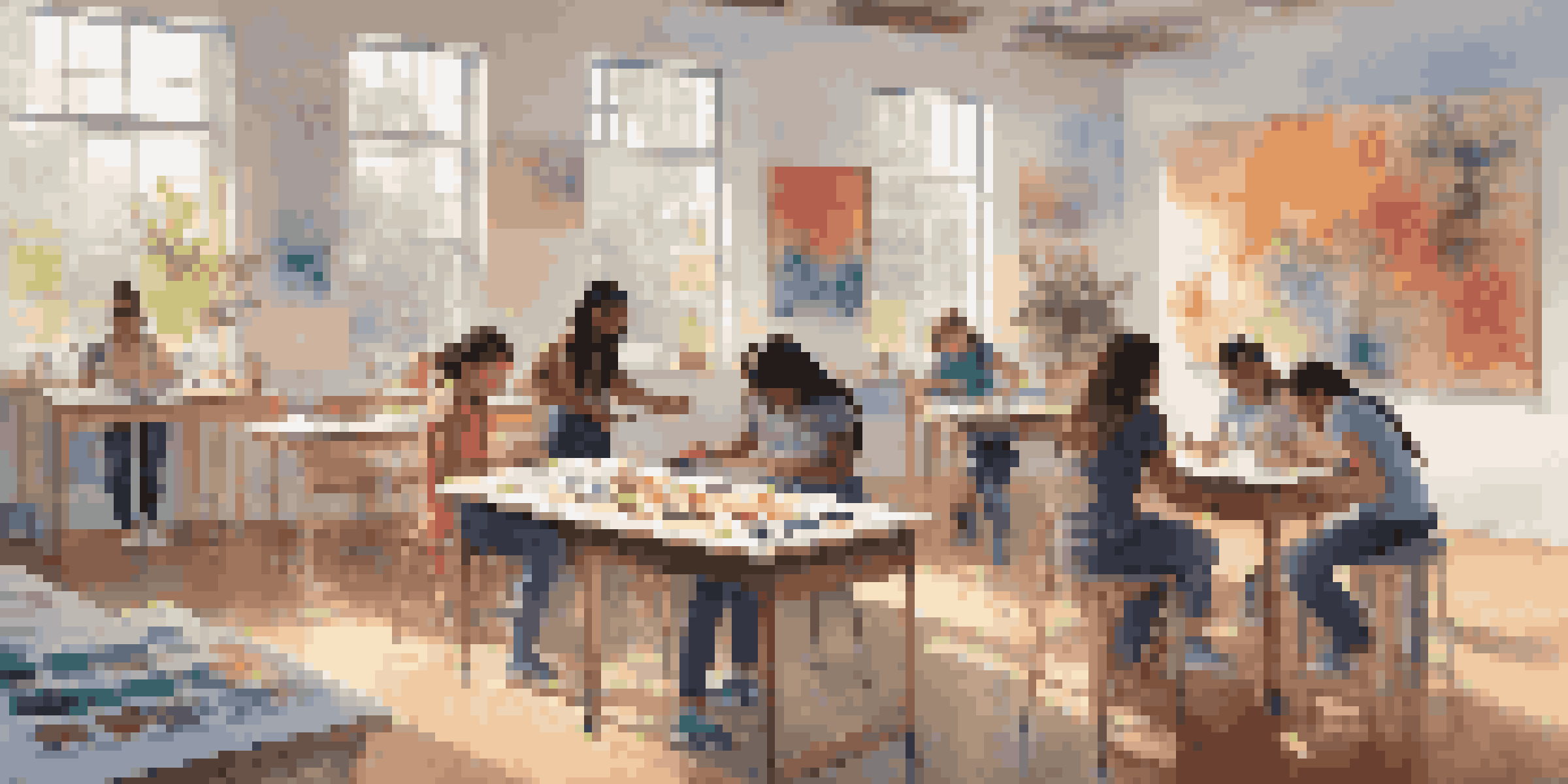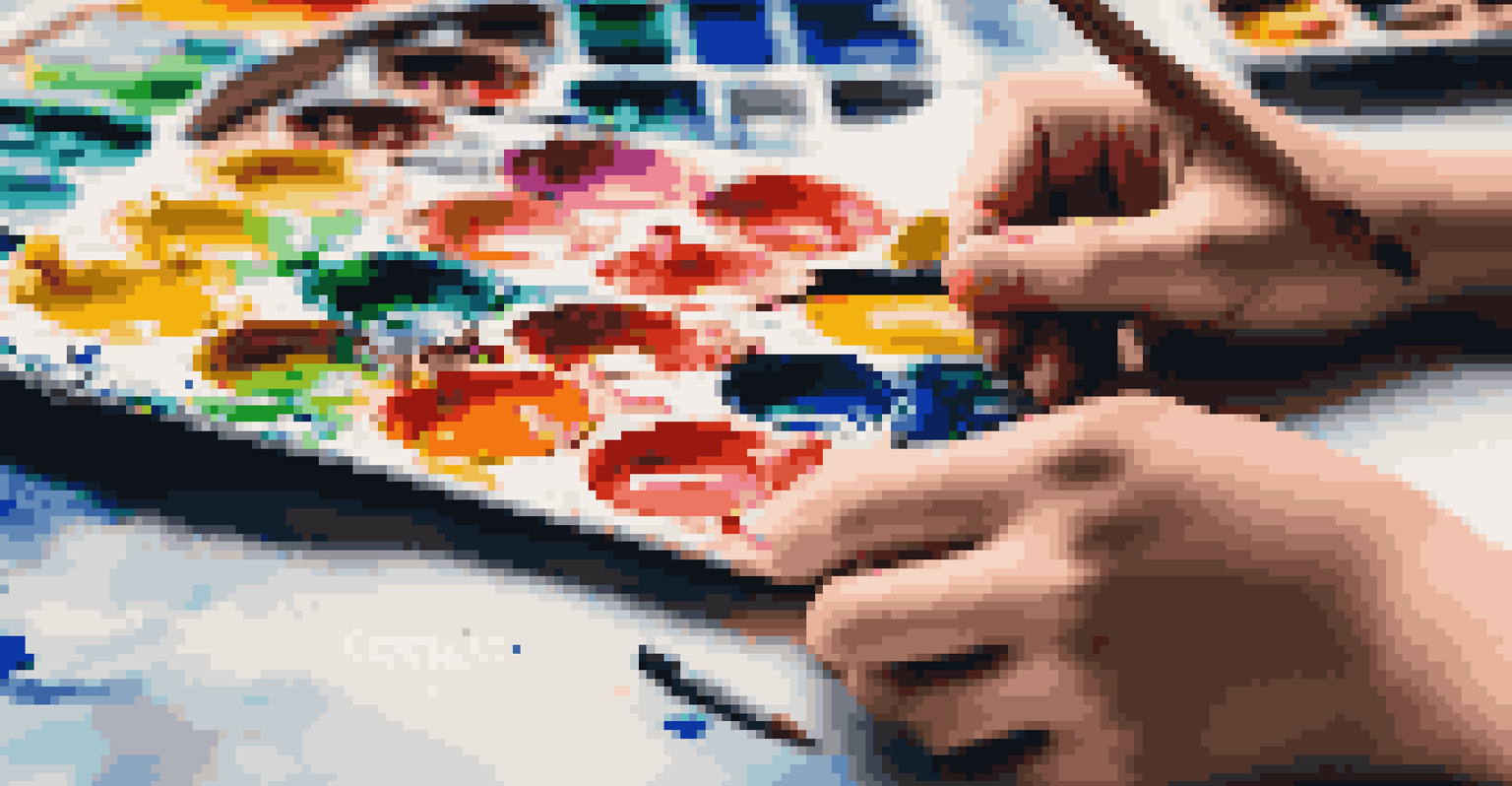The Influence of Art on Emotional Intelligence in Adolescents

Understanding Emotional Intelligence and Its Importance
Emotional intelligence (EI) refers to the ability to recognize, understand, and manage our own emotions, as well as the emotions of others. For adolescents, developing EI is crucial, as it influences their relationships, decision-making, and overall well-being. In a world where social interactions are constant, having strong emotional intelligence can lead to healthier connections and better conflict resolution skills.
Art enables us to find ourselves and lose ourselves at the same time.
Adolescence is a transformative period where individuals learn to navigate complex social landscapes. During this time, the ability to empathize and communicate effectively becomes essential. Interestingly, research has shown that art can serve as a powerful tool for fostering these skills, providing a unique avenue for self-expression and emotional exploration.
By engaging with art, whether through creation or appreciation, adolescents can practice recognizing their feelings and the emotions of those around them. This practice lays the groundwork for building empathy, which is a fundamental component of emotional intelligence.
Art as a Medium for Self-Expression
Art allows adolescents to express their emotions in a safe and constructive way. Whether through painting, music, or writing, creative outlets give them the freedom to explore their feelings without fear of judgment. This process can be therapeutic, helping them to articulate complex emotions that they might otherwise struggle to express verbally.

For instance, a teenager who feels overwhelmed by anxiety may find solace in creating music, allowing them to channel their feelings into a productive form. This not only aids in emotional processing but also serves as a bridge to communicate their experiences to others. Through art, they can share their internal struggles, fostering a sense of connection and understanding with peers.
Emotional Intelligence is Vital
Developing emotional intelligence (EI) in adolescents is crucial for fostering healthy relationships and effective decision-making.
Moreover, when adolescents share their art with others, it opens up dialogues about emotions, creating opportunities for empathy and support. This sharing process reinforces their EI by helping them to see different perspectives and appreciate the emotional experiences of others.
The Role of Art Education in Schools
Art education programs in schools play a vital role in nurturing emotional intelligence among adolescents. These programs provide structured environments where students can explore various art forms while also learning to express their emotions. Such settings encourage collaboration, critical thinking, and emotional awareness, all of which contribute to EI development.
Every artist dips his brush in his own soul, and paints his own nature into his pictures.
For example, group projects in art classes require students to communicate their ideas and collaborate with their peers. This not only enhances their artistic skills but also helps them to practice empathy and active listening. By valuing each other's input, students learn to appreciate diverse perspectives, a key aspect of emotional intelligence.
Additionally, art teachers often facilitate discussions about emotions and experiences related to the art being created or viewed. This dialogue encourages students to reflect on their feelings and understand the emotions of others, further strengthening their emotional intelligence.
Art Therapy and Emotional Development
Art therapy is a specialized field that combines psychology and artistic expression to promote emotional healing and growth. In this therapeutic context, adolescents are guided by trained professionals to use art as a means of exploring their feelings and experiences. This approach can be particularly beneficial for those who may find it difficult to articulate their emotions verbally.
For instance, a teenager struggling with grief might use painting to visualize their feelings, allowing them to process complex emotions in a supportive environment. The therapist can then help them make connections between their artwork and their emotional state, facilitating deeper understanding and healing.
Art Enhances Emotional Expression
Art provides a safe space for teenagers to express and explore their emotions, fostering empathy and connection with others.
By engaging in art therapy, adolescents not only enhance their emotional intelligence but also develop coping strategies for dealing with life's challenges. This therapeutic process empowers them to manage their emotions more effectively, paving the way for healthier relationships and personal growth.
Cultural Exposure Through Art
Exposure to diverse cultures through art can significantly enrich adolescents' emotional intelligence. Art serves as a reflection of different societies, values, and experiences, allowing young people to gain insight into perspectives different from their own. This exposure fosters empathy and cultural awareness, essential components of emotional intelligence.
For example, attending an exhibition of indigenous art can open a dialogue about the history and emotions tied to that culture. By engaging with various artistic expressions, adolescents learn to appreciate the complexities of human experience and understand the emotions that drive different communities.
Furthermore, participating in cultural art programs or workshops can help young people build relationships with peers from different backgrounds. These interactions not only enhance their emotional intelligence but also promote inclusivity and understanding in a diverse society.
Art and Emotional Regulation Skills
Engaging with art can also help adolescents develop emotional regulation skills. Creating art encourages mindfulness and focus, allowing them to channel their emotions constructively. This process aids in recognizing emotional triggers and managing responses, which are crucial aspects of emotional intelligence.
For instance, a teenager experiencing anger may turn to drawing or sculpting as a way to process their feelings instead of reacting impulsively. This practice can lead to healthier coping mechanisms, empowering them to handle difficult emotions in a more controlled manner.
Community Art Builds Connections
Engaging in community art projects encourages adolescents to collaborate, enhancing their emotional intelligence and sense of belonging.
Moreover, the act of creating art can serve as a form of self-care, helping adolescents to unwind and reflect on their emotions. This intentional practice not only promotes emotional regulation but also fosters resilience, equipping them to face challenges with greater confidence.
Community Engagement Through Art
Community art projects can provide adolescents with opportunities to connect with others and practice their emotional intelligence skills. Working together on art initiatives fosters teamwork and collaboration, allowing them to understand the importance of collective emotional experiences. These projects often create a sense of belonging and purpose among participants.
For example, a mural project in a community can unite teenagers from different backgrounds, encouraging them to share their stories and collaborate on a shared vision. This process not only enhances their emotional intelligence but also strengthens community ties and promotes social responsibility.

Additionally, participating in community art events can help adolescents develop leadership skills and confidence. As they contribute to a greater cause, they learn the value of empathy and the impact of their actions on others, further enriching their emotional intelligence.